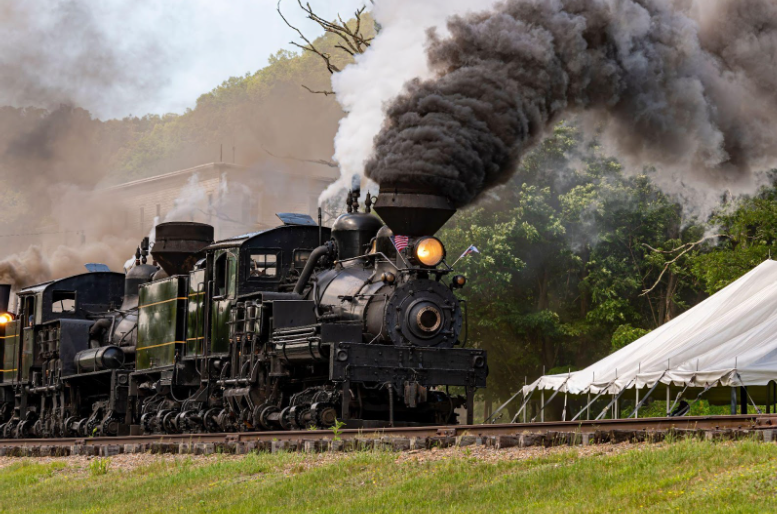The impact of classic trains and vintage automobiles extends beyond their roles as transportation. These machines have shaped cultural, technological, and social landscapes, showcasing human ingenuity and the relentless pursuit of advancement. They embody a legacy of innovation that continues to influence modern engineering and design principles. Patrick Gailus explores their history, design evolution, and ongoing relevance.
Table of Contents
Historical Overview and Early Innovations
Classic trains and vintage automobiles represent significant achievements in engineering and hold a cherished spot in the annals of history. The history of these machines began in the early 19th century with the inception of the steam locomotive, which revolutionized land travel. Around the same period, the groundwork for the modern automobile was laid, culminating in the production of the first gasoline-powered car by Karl Benz in 1885. These early innovations set the stage for a century of rapid technological advancements and increased mobility, transforming societal structures and economic patterns across the globe.
Initially seen as marvels of human ingenuity, trains quickly became the backbone of industrial nations, facilitating large-scale industrialization and urbanization. They connected distant cities and made cross-country travel feasible within days instead of weeks. Meanwhile, automobiles started as luxury items for the wealthy but soon became more accessible, heralding an era of personal transportation that redefined independence and mobility.
As these technologies evolved, they spurred further innovations. Streamlined designs and powerful engines were developed as speed symbolized progress and efficiency. The Ford Model T, introduced in 1908, famously made car ownership possible for the average American, illustrating how technological advancements can lead to widespread societal change. This period of rapid development laid the foundational technologies and design principles that are still admired and studied in today’s classic trains and cars.
Design and Technological Advancements
The convergence of design and technology in classic trains and vintage automobiles is a testament to human creativity and engineering. While trains embraced the challenges of power and efficiency, automobiles focused on compactness and aesthetics, each pushing the boundaries of what was technically possible at the time. The sleek silhouettes of the 1930s streamliners improved train speed and efficiency and became synonymous with luxury and comfort during travel. Similarly, in the automotive world, the introduction of the assembly line by Henry Ford revolutionized production techniques, making cars affordable and altering the industrial landscape forever.
The evolution of technology in these sectors was not just about functionality but also about creating a statement. Automobiles like the Chevrolet Bel Air of the 1950s, with its iconic tailfins and chrome detailing, showcased an era where style was as important as the engine under the hood. This period saw cars becoming extensions of personal style, reflecting the burgeoning youth culture and the post-war boom. In contrast, trains, with their massive engines and intricate rail systems, highlighted nations’ industrial might and technological ambition, becoming symbols of progress and power.
Iconic Models and Cultural Influence
The cultural impact of classic trains and vintage automobiles is indelible, shaping not only the transportation landscape but also the cultural identity of the 20th century. The Orient Express, celebrated in literature and film, emerged not only as a train service but as a symbol of luxury, capturing the imagination of millions. On the roads, the Mini Cooper, introduced in the 1960s, transcended its British origins to become a cultural icon, embodying the fun and freedom of the swinging sixties. Its compact design and handling made it a favorite in cities and a staple in rally racing, further cementing its legendary status.
The influence of these vehicles extends beyond their primary utility. They have been immortalized in countless movies, songs, and stories, sometimes taking on their own character. The Ford Mustang, for instance, has appeared in numerous films and is often associated with the rugged, rebellious spirit of American culture. This vehicle, along with others of its kind, reflects technological achievements and resonates with people, illustrating how deeply transportation is woven into the fabric of societal development.
Preservation and Enthusiast Communities
The efforts to preserve classic trains and vintage automobiles are driven by a passionate community of enthusiasts and historians who recognize the importance of maintaining these artifacts for future generations. Across the globe, numerous museums and private collections showcase meticulously restored pieces, each telling a story of a bygone era. These preservation techniques not only serve as a homage to engineering brilliance but also as educational resources that offer insights into the technological and cultural narratives of the past.
Enthusiast communities play a pivotal role in these preservation efforts. Through clubs, exhibitions, and online forums, members exchange knowledge, parts, and stories, ensuring that the legacy of these vehicles continues. These communities often organize rallies and meet-ups, which serve as social gatherings and public exhibitions that reignite interest and appreciation for these historical marvels.
Relevance and Future Prospects
Despite their age, classic trains and vintage automobiles influence modern design and engineering. The timeless aesthetics and pioneering technologies of the past still inspire modern vehicle designers and engineers. This blending of old and new is seen in the resurgence of retro designs combined with modern technology, offering nostalgia with efficiency. Moreover, the principles of aerodynamics and aesthetics refined in the past continue to inform current advancements.
Looking ahead, integrating sustainable practices in restoring and using classic vehicles is gaining traction. Innovations such as electric powertrains are being retrofitted into vintage models, offering a way to preserve these vehicles’ heritage while aligning with modern environmental standards. This approach extends the lifespan of these vehicles and ensures they remain relevant.
Cultural Legacy and Ongoing Impact
The cultural legacy of classic trains and vintage automobiles profoundly influences various aspects of modern life, from design and fashion to film and music. These vehicles are more than mere modes of transport; they are cultural artifacts that encapsulate the spirit of their times. Their ongoing impact is evident in how they continue to be celebrated in media and at events, reflecting a collective nostalgia and appreciation that transcends generations. Their influence extends into innovation, where the foundational technologies and design principles they introduced continue to be studied and revered.












